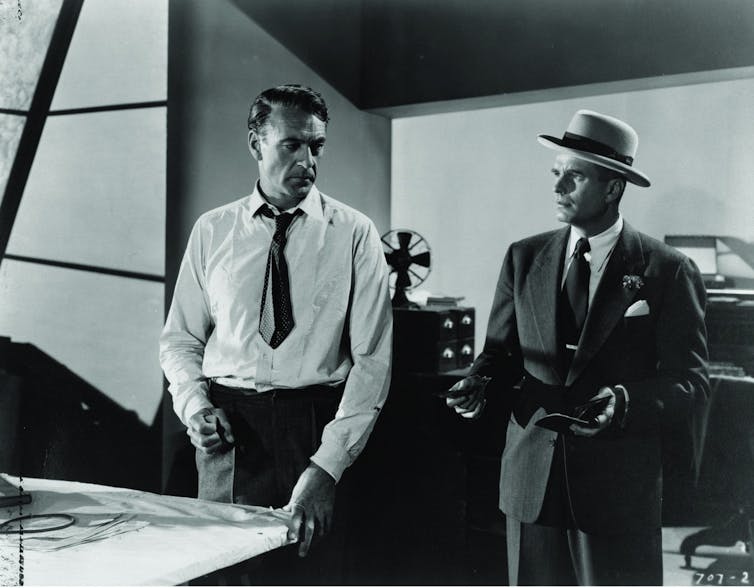Arati Kadav’s Mrs. – an official remake of Jeo Baby’s The Great Indian Kitchen (2021) – is a technically sound film. It opens with a montage of delicacies being cooked in an average Indian kitchen. Editor Prerna Saigal cuts the meticulous preparation of each dish with a carefully choreographed piece, drawing our attention to the ‘dance’ most women have to endure inside a household, to keep it on its axis. Scored by Sagar Desai featuring sounds from everyday life (like squeaky, rusted gate offering rhythm to the track), the montage works well. But it can’t quite conjure the rhythm of Baby’s original film, which editor Francis Louis establishes in the never-ending loop of domestic labour thrust upon women. Especially inside a kitchen.

A still from Mrs. Photo: Screengrab from video.
Kadav, who broke out with imaginative Sci-Fi films (The Astronaut and His Parrot) using wide-eyed imagination to compensate for oppressive budgets, also constructs her latest venture with a similar amount of distance. The food photography is immaculate, the kitchen and the home look like they were built on a soundstage. Unlike Baby’s film, where both the kitchen as well as the home felt lived-in. When Richa (Sanya Malhotra) has to immerse her hand into a clogged sink to weed out the sediments at its bottom, it doesn’t feel as viscerally icky as Nimisha Vijayan’s character having to hand-pick the chewed-out bones thrown by her father-in-law and the husband, in the original film.
The Great Indian Kitchen did a sensational job of dispassionately recording the indignities the women in an Indian home have to suffer under the weight of their ‘duties’. Kadav’s film tries to replicate the same, but isn’t able to do so with a guttural intensity. What was affecting about Baby’s film is how casually the men of the family invisibilise the women’s work and by extension their identity as human beings – with thoughts, preferences, considerations.

A still from Mrs. Photo: Screengrab from video.
For a long time, I couldn’t even tell if Kadav’s film was set in Delhi or Mumbai or any other Indian city. Sanya Malhotra’s character appears to be dressed like a Maharashtrian bride in the film’s opening stretch, but then a character mentions Kamani auditorium, which indicates the film is set in Delhi. The original film has a crucial plot point involving the daughter-in-law voicing her dissent against the Supreme Court ruling barring women from entering the Sabarimala temple (because menstruation makes them ‘impure’). Kadav’s film swaps this for the low-stakes story of Richa bringing ‘shame’ on the family with her dance troupe’s YouTube channel. It’s a feeble, corporate-tested, diluted alternative, compared to the original.
Remakes usually require a new perspective, or some bold insights to keep things fresh for even those who have seen the original. Mrs. is the kind of faithful, strained remake that only wants to exploit the popularity of the original film, without raising the stakes for itself.
A word about Nishant Dahiya, who plays Richa’s husband as a two-dimensional ‘nice guy’ — it’s almost painful to watch, compared to Suraj Venjaramoodu – whose misogyny hides in plain sight, until his wife playfully calls out his ‘good manners’ in a restaurant. It’s a superbly tense scene in the original film, where the tone changes from fairytale to a hyper-realistic relationship drama.

A still from Mrs. Photo: Screengrab from video.
Kadav’s film seems to replicate the beats of a wedding film in the beginning, never quite shifting gears to the dystopian reality of a casteist Indian household that discriminates against a menstruating member of their family. Kanwaljit Singh, usually tasked with playing the ‘cool’ father/father-in-law character, is an interesting casting choice. Playing a rigid patriarch, who doesn’t compromise on the slightest of things, Singh brings a softness to the mundane cruelty he inflicts on the planets around him, while himself acting as the centre of the family’s universe. Unfortunately, even his character is plagued with a generic personality, never digging for deeper reasons behind why he’s like this.
Sanya Malhotra, a fine actor who can sail through terrible films with her spunk alone, can’t rise above the script’s lack of ambition. Who is Richa beyond her domestic duties and her love for dance – we hardly find out. What makes her angry, except the garden-variety sexism on display in her in-laws home? We never know. There’s a nice little dialogue about people (especially Indian women) being ‘prime numbers’, only divisible by themselves – that feels wasted in this underachieving film. Having said that, Malhotra does nail this one scene where she confronts her husband’s advances for being so inconsiderate about her own sexual pleasures.
As a remake, Mrs. should’ve aimed higher and taken more risks. Kadav’s talents are wasted in a film that ties both her hands, and then expects a culturally distinguishable film. As for Malhotra rising up against patriarchy, another film already made stellar use of her easy presence: Pagglait (2021).
*Mrs. is currently streaming on Zee5.





















